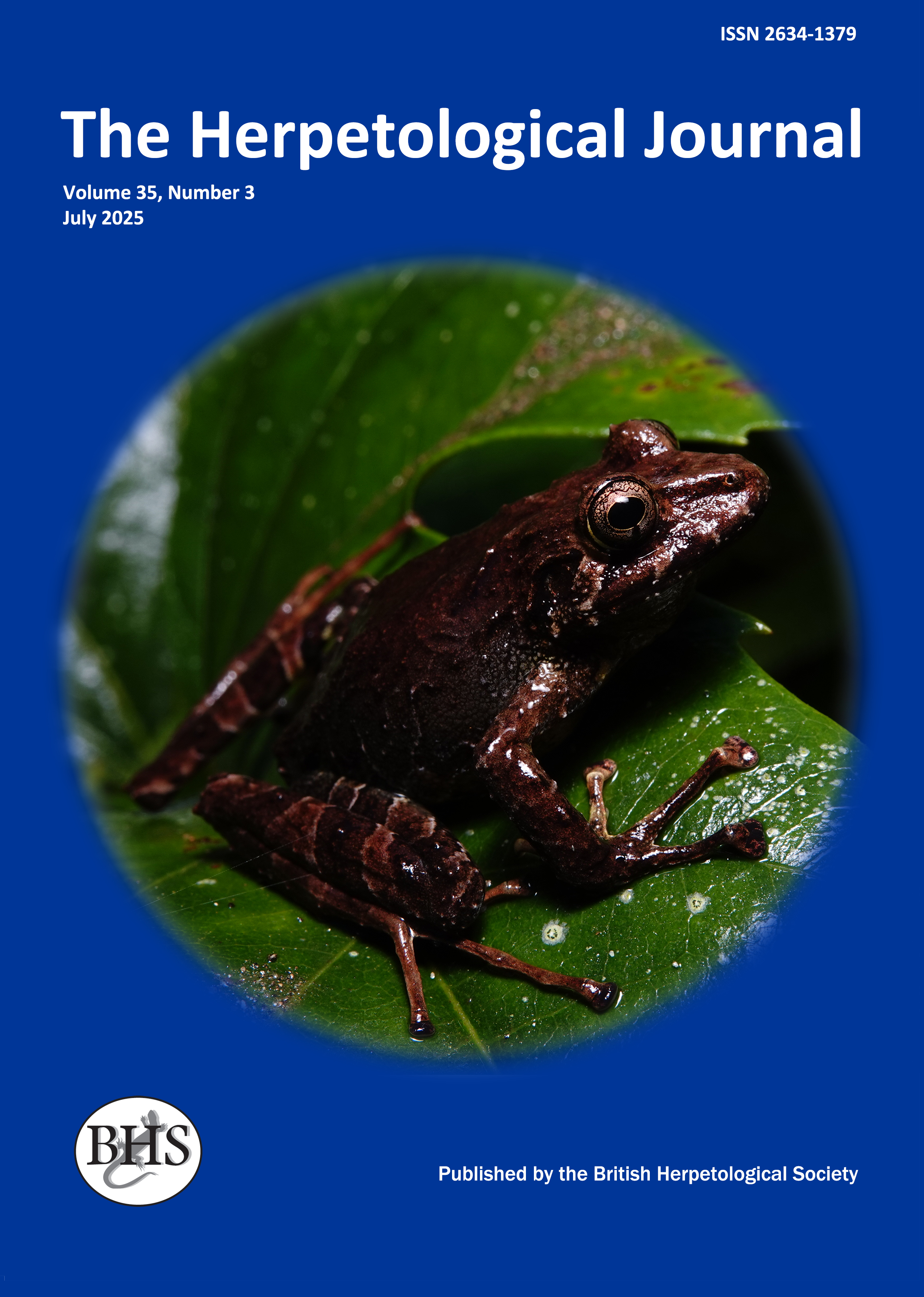
The Herpetological Journal
The Herpetological Journal is the Society's prestigious quarterly scientific journal. Articles are listed in Biological Abstracts, Current Awareness in Biological Sciences,Current Contents, Science Citation Index, and Zoological Record.
ISSN 0268-0130
2021 Impact Factor from Clarivate for the Herpetological Journal is 1.194, an increase of 0.332 from 2020.
pdf 01. Habitat structural and meteorological parameters influencing the activity and local distribution of the Golden striped salamander, Chioglossa lusitanica
1461 downloads
Open Access
pp.85-90
Authors: F. Sequeira, H. Gonçalves, M. M. Faria, V. Meneses And J. W. Arntzen
Abstract: We studied the activity pattern and small-scale spatial distribution of the golden-striped salamander, Chioglossa lusitanica, in a forest plot in northwestern Portugal. A large proportion of the local population inhabited an underground watercourse and foraged in the woodland, leaving and entering the underground shelter through three holes. Surface activity - measured as the number of salamanders out in the open and their distance from the inferred shelter- was positively associated with relative humidity and precipitation. A negative relationship between dispersion distance and temperature was found in females. Distances moved were higher for adult salamanders than for juveniles. Spatial models indicated that males, females and juveniles differed in habitat utilization. The frequency of occurrence of salamanders at the surface was highest in the area of the stream (adults andjuveniles), near dry-stone wal ls (males andjuveniles), in areas with a higher than average density of trees (adults) and in areas of dense undergrowth (females). The results suggested that (I) the underground watercourse served as a retreat from which the salamanders would visit the surface, (2) dry stone walls functioned as retreats ratherthan as foraging grounds, and (3) trees and dense vegetation served as shelter for foraging salamanders. The results are compared with those for phylogenetically related and morphologically similar species.
Keywords: Chioglossa lusitanica, distribution, habitat, spatial model, Portugal

